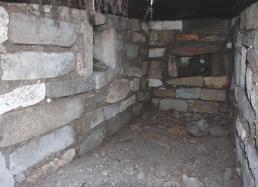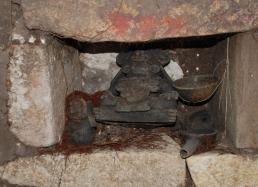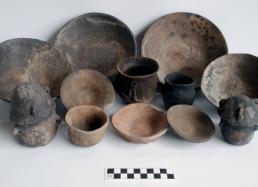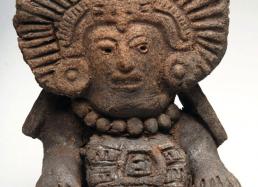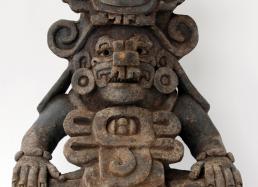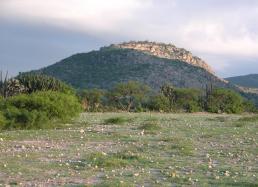1: Big News and New Beginnings
In my last dispatch, I mentioned that I would have more news about discoveries from our 2008 expedition soon. As promised ... National Geographic has just published an online article about our work at El Palmillo and our discovery of an unlooted tomb!
The article, written by John Roach, describes how our findings at El Palmillo provide insight into the period of time (called the Late Classic period) when economic and political power began to shift from the Zapotec capital at Monte Albán to El Palmillo and other outlying settlements. These findings also may shed light on why we see a gradual collapse of civilizations not only in the Valley of Oaxaca, but also across all of Mesoamerica at about this same time.
For more details, please check out the article "Zapotec Digs in Mexico Show Clues to Rise and Fall." We're also hopeful that a Spanish-language article on this research will ultimately be published in the magazine, National Geographic en Español.
But to give you a few more details about our tomb find, you may remember that during the 2007 field season, we uncovered the largest of several palaces at El Palmillo. Like the other residences throughout the site, the palace had clearly been rebuilt and remodeled several times between A.D. 500 to 900. Over the next two summers, we gradually uncovered a total of four building phases, each evidenced by a stratigraphic construction layer.
At its largest size during the penultimate phase of occupation, the palace measured roughly 6,500 square feet (600 square meters) and included three patios and 20 rooms. The largest of these patios provided public space for religious rituals and/or political meetings. But the biggest surprise lay beneath the palace’s oldest floor. The earliest phase of the palace’s construction had apparently begun with the building of a masonry tomb (see above photo.)
A series of adobe steps led from the patio to the tomb, whose entry was covered by a stone door. This masonry tomb included three niches, which were placed on the north, south, and west walls. The niches were each filled with pottery and other materials (see Photo #1 below.)
Inside the tomb, we discovered the remains of three individuals. Unfortunately, the bones were not well preserved because water was able to enter after the tomb was filled. Individuals were interred in the tomb during more than one episode. We know this because some of the human bones were painted red. This had to have happened well after these individuals were first interred, because their flesh had had time to decay.
The lintels above some of the niches in the tomb were also painted red (see Photo #2 below.) Buried alongside the human remains were the bones of a dog. In many Mesoamerican cultures, dogs were believed to be guides capable of leading the dead into the underworld.
More than 40 ceramic vessels were also found in the tomb (see Photo #3 below.) Four of these vessels were urns (see one of the smaller urns in Photo #4 below.) The most spectacular urn we found depicted Cocijo, or a person portraying Cocijo, the Zapotec supernatural being associated with lightning and rain (see Photo #5 below.) To see more photos of the tomb and its contents, please take a look at the new page I’ve added to my 2008 El Palmillo Photo Gallery.
Along with the discovery of the tomb, I have one more piece of news: 2009 marks the beginnings of our move to a new site—the Mitla Fortress! Just over six miles (10 kilometers) away from El Palmillo, the fortress can be considered part of the larger and more famous prehispanic site of Mitla. Now buried beneath the contemporary town of the same name, Mitla is well known for its elaborate stone architecture and subterranean cruciform tombs.
We plan to approach the Mitla Fortress as we did El Palmillo, beginning our investigations at the bottom of the hill and moving upward in subsequent seasons (see Photo #6 below.) We're eager to discover what the prehispanic population of the Mitla Fortress did to make their living and whether the patterns of everyday life were similar to what we found at El Palmillo.
Word of the Day: Mitla, which is taken from the Nahuatl (Aztec) Mictlan, derived from micca (corpse or tomb) and tlan (place). The name of Mitla in the local Zapotec language is Lyobaa, which translates as “entrance to the grave” or “place of tombs.”
More soon,
Gary


